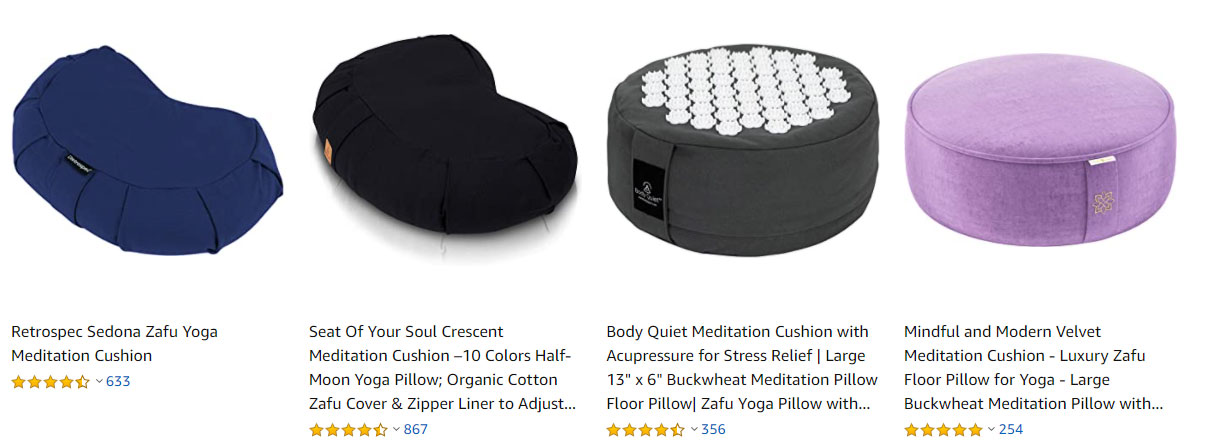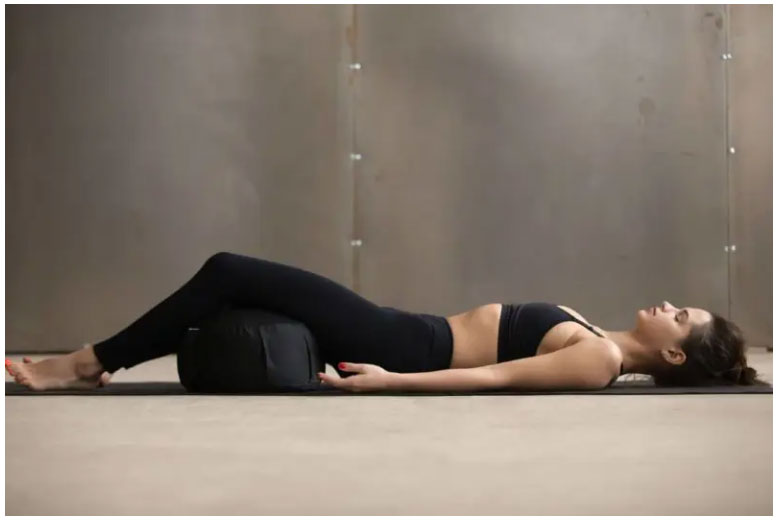How to Choose Your Zafu
If you practice meditation, you know that it is not always easy to find a comfortable posture, both in the legs and in the back. However, there are various accessories, including meditation cushions, that will allow you to meditate comfortably with your back aligned. Among these cushions is the zafu. We will see how to choose one adapted to your situation and your morphology.
What is a zafu?
A zafu is a round cushion with gathered sides. The curved edges allow your legs to be raised so that your knees are lower than your hips. In this position, it is easier for your spine to maintain its natural curves.
The curved edges also help prevent your thighs from pressing too hard against the edge of the cushion, which can become uncomfortable over time. The height of a zafu cushion usually varies from 10 to 15 cm and makes traditional sitting positions easier and more stable.
Zafus have an advantage over V-shaped cushions. You can sit on them in two different ways:
• With the zafu under the pelvis in the Sukhasana (cross posture).
• With the zafu under the hips and between the knees in the Vajrasana (diamond pose).

A short history of zafu
Zafu is native to China and is associated with the Zen traditions of Japan. The word "zafu" refers to the original filling of the cushion.
The original filling was a soft, fluffy fiber made from reed seed heads. Traditional zafus were sometimes filled with kapok, from the seed pod of a rainforest tree called Ceiba.
The zafu has secured its place in Zen meditation because of its size and shape, which allows for optimal alignment of the knees, hips, pelvis and spine.
Design of this meditation cushion
Typical zafus are about 35 centimeters in diameter and often 20 centimeters high. Contemporary zafus are sewn from three pieces of thick cloth, usually black. Two round samples of the same size for the top and bottom of the cushion, and a long rectangle sewn in between.
They are usually filled either with kapok (a fluffy vegetable fiber, similar to Typha) or buckwheat hulls.
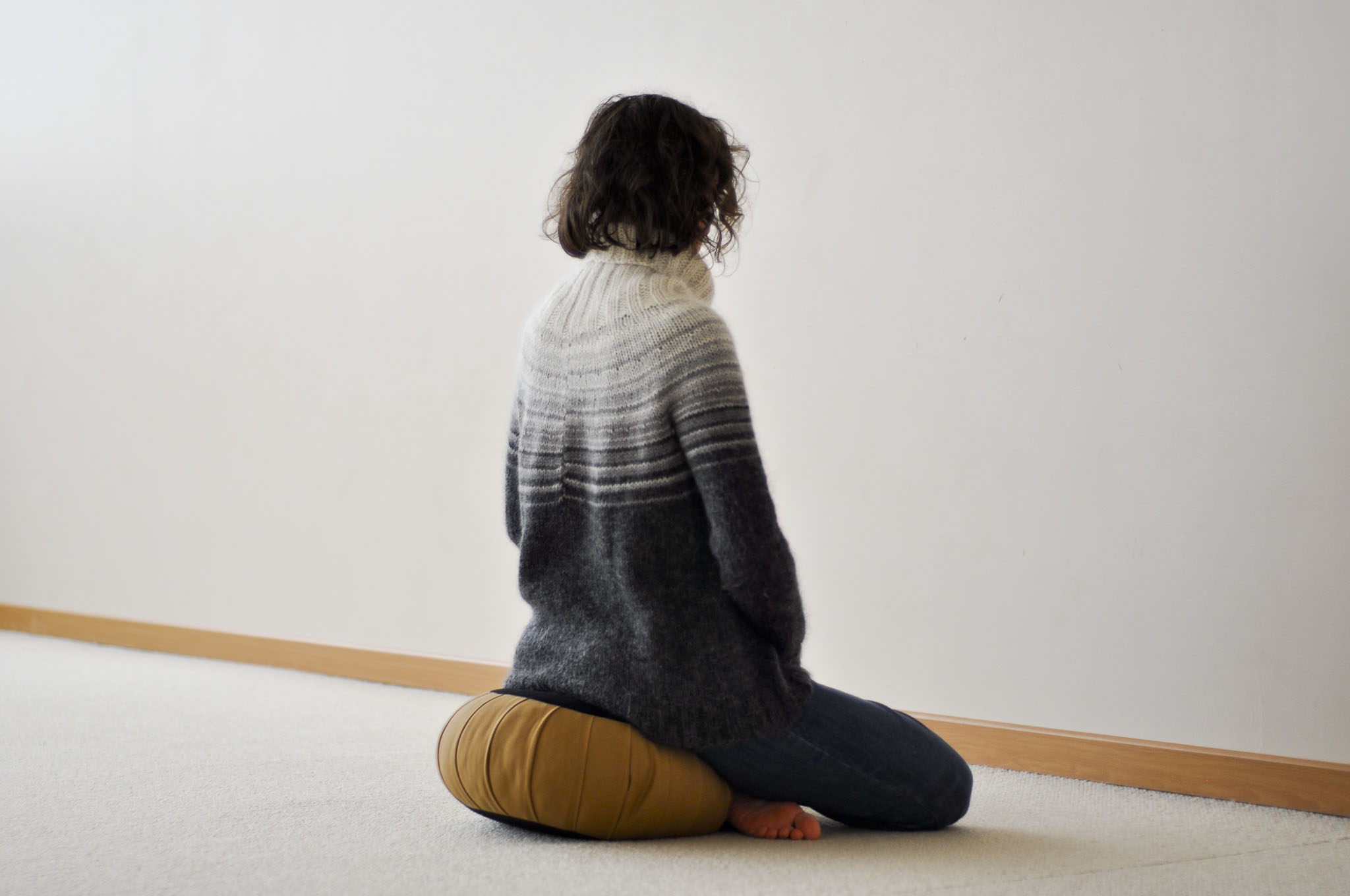
How to choose the right zafu?
The zafu exists in standard shapes and sizes. However, there are some things you should consider before deciding to buy one. The main factors to consider are: your size, comfort level, flexibility, reliability, or the shape that suits you.
Consider your size
Your size will play an important role in choosing a Zafu or other meditation cushion. The taller you are, the more you will need to be elevated. However, be aware that most zafus are suitable for people of almost any size.
Of course, you should not be too high either, because you will be sitting forward most of the time and your knees should be able to touch the ground below.
The shape of the cushion
If you wish to try a zafu, you will have the choice between two shapes. The classic zafu shape is round, while the crescent shape is more modern. The main function of each shape is to lift your pelvis above your knees.
The classic round zafu allows your pelvis to tilt forward, preserving the natural curve of your spine and freeing your knees to move downward. From there, your legs can bend and your knees, as well as the base of your seat, can support your weight in a kind of polygon.
The crescent will widen this polygon, supporting your weight not only from the base of your seat and your knees, but also through your hips. Practitioners who prefer the zafu crescent report a feeling of increased support through the hips and legs, as well as a wide and comfortable base.
The comfort of Zafu
When you find yourself sitting on the floor or on a yoga mat during meditation, you quickly realize that it is uncomfortable and prevents you from concentrating and relaxing.
So, once you've chosen the shape of your zafu, it's time to choose its upholstery. Buckwheat hulls and kapok have long been used to stuff cushions, and each has its own unique properties.
Buckwheat hulls come from one of the oldest cultivated grains in the world. The same buckwheat that you use in the kitchen also provides the hulls for filling the cushions. They are particularly popular because they are non-allergenic and keep the cushions fresh.
In zafus, buckwheat provides firm support for your body, while conforming to its shape. Most people are familiar with the feeling of buckwheat filling when using travel pillows. For example, buckwheat hulls are the hard outer shells that house the buckwheat seeds. The hulls are solid, aromatic and do not retain or reflect heat. This makes them an ideal, non-allergenic alternative to feathers or synthetic fibers for pillows and upholstery.
Kapok, on the other hand, is a light fiber that comes from the seed pods of the Ceiba tree. It grows in tropical forests and has various spikes on its bark to scare off predators. Once adult, it can become very large and can even be carved into real family size canoes.
The kapok floats and has been used as stuffing in life jackets. In zafu, the kapok looks like a "firm and floating" cushion.
The padding and material of your cushion will dictate its comfort. If you like your cushion to be a little softer, you will want a zafu in kapok. If you prefer a firm base and a hard seat, you'll want a buckwheat zafu.
If you don't know which zafu to choose as a beginner, it is advisable to turn to kapok. Not only does it offer a higher seat, but it is also softer, which can be important to reduce the pressure on your skeleton when you are a beginner.
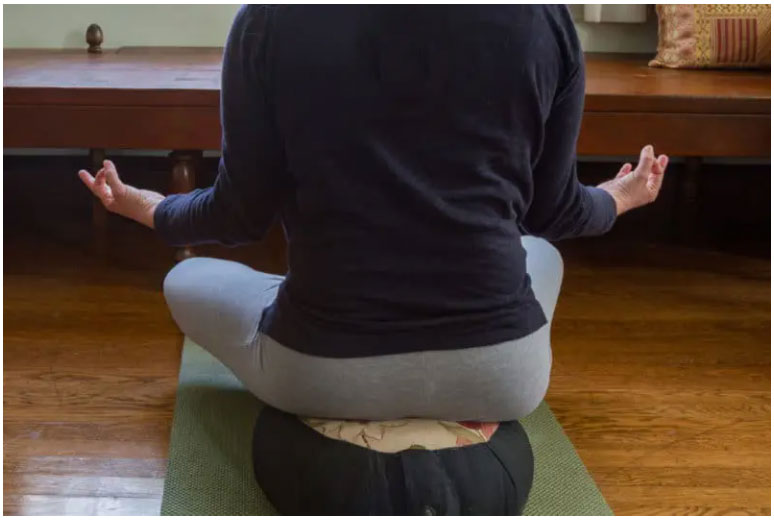
A question of flexibility
Sitting cross-legged requires a certain level of flexibility. Someone who is not very flexible will need a zafu in order to meditate properly.
The zafu will help you maintain a slight forward position with your knees under your hips. This is essential to maintain proper spinal alignment and to keep pressure off your knees and ankles.
The zafu is also a versatile cushion that can be used if you prefer a kneeling meditation. For kneeling meditation, you can simply turn the zafu to the side to give it a little more height so that you can kneel comfortably.
Choosing a reliable zafu
It is relevant, as with any purchase, to choose a reliable zafu that resists over time. Light and affordable, one must still pay attention to the quality of the materials used for its design.
In addition, it is necessary that the cushion be perfectly padded and of course sewn properly. Please pay attention to this when you plan to buy your meditation cushion.
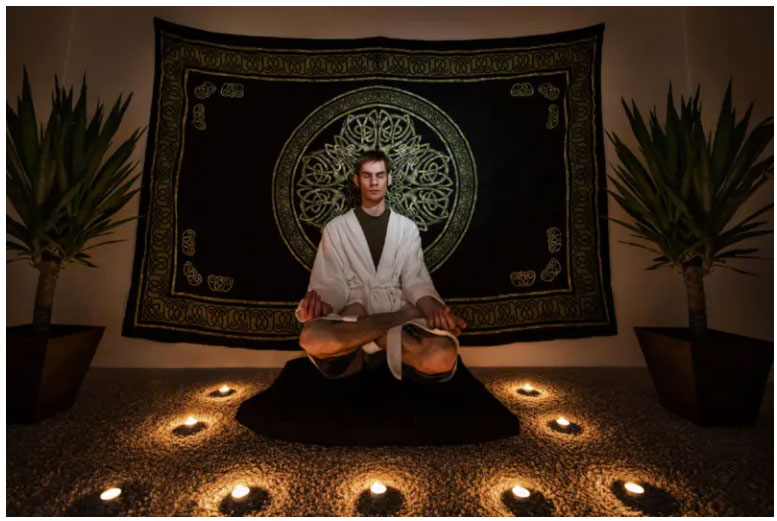
How to sit correctly on your zafu?
Round cushions are the most popular and most used for good reasons. However, most people who are just starting out don't know how to use them properly!
Sit correctly on the cushion (sit on the front 2/3 of the cushion), then place your feet comfortably on the front and cross your legs. In kneeling position, your legs and ankles should be well aligned to respect your morphology.
You tend to sit naturally straighter, as your lower body is part of the support. Thus you naturally accentuate the curve of your lower back.
This is important because if your knees are high, the inner muscles of your thighs are not supported. In this case you are not very stable, and your muscles will work to keep you in your posture rather than to anchor themselves deeply in your meditation practice.
What is the price of a zafu?
The zafu remains a relatively affordable cushion. Of course, as with any item, there are different prices, which will mainly depend on the quality of the materials used, the quality of the design, etc. For a quality meditation cushion, you should expect to pay about 50 euros. Keep in mind that it is better to pay slightly more for a zafu that will last you over time, rather than sticking to the bare minimum and only last for three months.
Don't hesitate to study the price, solidity and comfort of the zafu. You will not be able to make a mistake!
Alternatives to zafu
There are different alternatives on the market for meditation cushions. If the zafu does not suit you, either in terms of posture, solidity or practicality, you may be tempted by another model. Rectangular, foldable cushions and even meditation benches are available.
Be aware, however, that the zafu, although not the only option, remains relatively affordable. It is a good starting point to start practicing meditation.
Conclusion on Zafu
As we have seen, the zafu proves to be a formidable tool for practicing meditation on a daily basis. It is up to you to choose the model that suits you best. Also keep in mind that the one made in kapok seems well adapted to beginners. For the rest, it's all a question of taste and comfort! Don't forget to adopt an efficient posture that allows the correct alignment of your whole body.
Do you also sometimes use a zafu to meditate?
